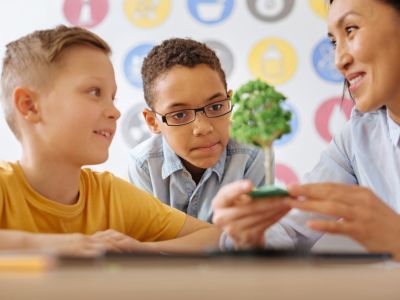What is Photosynthesis?
Plants, just like humans, require food in order to survive and grow. However, a plant’s food looks nothing like our food. Plants are the greatest consumer of solar energy, using power from the sun to mix up an energy rich meal. The process where plants make their own food is known as photosynthesis. Photosynthesis in plants is an extremely useful process whereby green plants take up carbon dioxide (a toxin) from the air and produce rich oxygen. Green plants are the only living thing on earth that are capable of converting the sun’s energy into food. Almost all living things are dependent upon the process of photosynthesis for life. Without plants, we would not have oxygen and the animals would have nothing to eat, and neither would we.
What is Chlorophyll?
The role of chlorophyll in photosynthesis is vital. Chlorophyll, which resides in the chloroplasts of plants, is the green pigment that is necessary in order for plants to convert carbon dioxide and water, using sunlight, into oxygen and glucose. During photosynthesis, chlorophyll captures the sun’s rays and creates sugary carbohydrates or energy, which allows the plant to grow.
Understanding Chlorophyll and Photosynthesis for Kids
Teaching children about the process of photosynthesis and the importance of chlorophyll is an integral part of most elementary and middle school science curriculums. Although the process is quite complex in its entirety, it can be simplified enough so that younger children can grasp the concept. Photosynthesis in plants can be compared with the digestive system in that they both break down vital elements to produce energy that is used for nourishment and growth. Some of this energy is used immediately, and some is stored for later use. Many younger children may have the misconception that plants take in food from their surroundings, therefore, teaching them the process of photosynthesis is vital to them grasping the fact that plants actually gather the raw ingredients necessary to make their own food.
Photosynthesis Activity for Kids
Hands-on activities are the best way to teach kids how the process of photosynthesis works. Demonstrate how the sun is necessary for photosynthesis by placing one bean sprout in a sunny location and one in a dark location. Both plants should be watered regularly. As students observe and compare the two plants over time, they will see the importance of sunlight. The bean plant in the sun will grow and thrive while the bean plant in the dark will become very sickly and brown. This activity will demonstrate that a plant cannot make its own food in the absence of sunlight. Have children sketch pictures of the two plants over several weeks and make notes regarding their observations.
